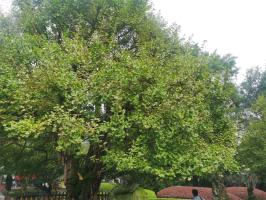Does Planting Trees Offset Carbon?
Climate change is one of the most pressing issues facing our planet, and carbon emissions from human activities are a major contributor to it. Carbon offsets have become an increasingly popular way for individuals and companies to offset their carbon footprint. Planting trees is often seen as a viable way to offset carbon, but does it really work?
Benefits of Tree Planting
Trees absorb carbon dioxide from the atmosphere during photosynthesis and store it in their leaves, trunks, and roots. Trees also improve air and water quality, reduce erosion and flooding, and provide habitats for wildlife. Planting trees on a large scale can help mitigate the impacts of climate change and provide many other benefits to the environment and people.
Calculating Carbon Offsets from Tree Planting
To determine if planting trees can effectively offset carbon emissions, we need to calculate the amount of carbon absorbed by the trees and compare it to the amount of carbon emitted by human activities. The amount of carbon absorbed by trees depends on various factors such as the species of trees, the age of the trees, the type of soil, and the location of the trees. A general rule of thumb is that an acre of trees can absorb about 2.5 to 10 tons of carbon dioxide per year, depending on these factors.
Limitations of Tree Planting as Carbon Offsets
While planting trees can help remove carbon from the atmosphere, it is not a silver bullet for tackling climate change. The effectiveness of tree planting as a carbon offset depends on many factors, such as the permanence of the carbon storage, the ability of the trees to survive and grow, and the potential for other carbon sources and sinks to offset the carbon emissions. Additionally, planting non-native or monoculture trees may not provide the same environmental benefits as planting a diverse range of native trees.
Conclusion
Planting trees is an important and valuable activity for mitigating climate change and improving the environment. However, it is not a panacea for reducing carbon emissions. To effectively offset carbon, we should focus on reducing our carbon footprint through energy conservation, renewable energy, and other sustainable practices. Planting trees should be seen as one of many mechanisms in the toolbox for climate change mitigation, rather than the sole solution.

 how many times do yo...
how many times do yo... how many planted tre...
how many planted tre... how many pine trees ...
how many pine trees ... how many pecan trees...
how many pecan trees... how many plants comp...
how many plants comp... how many plants can ...
how many plants can ... how many plants and ...
how many plants and ... how many pepper plan...
how many pepper plan...






























